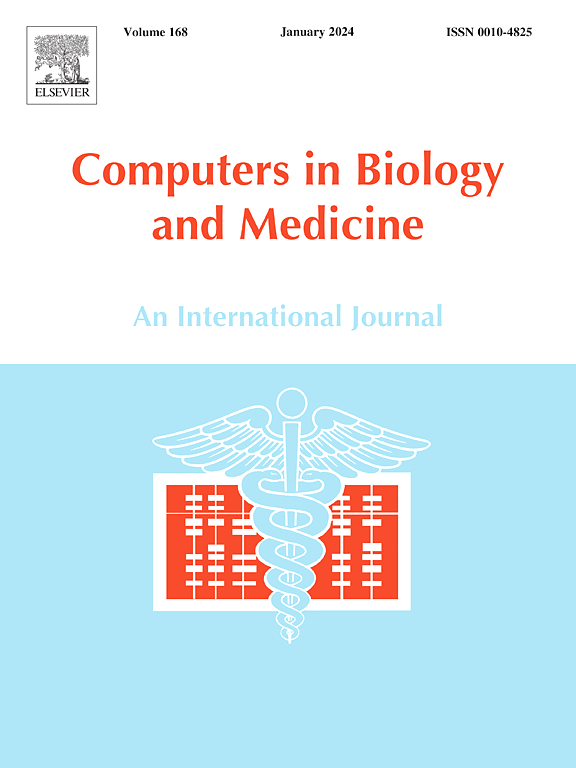Benchmarking of open-source algorithms for heart rate estimation from motion-corrupted photoplethysmography
IF 6.3
2区 医学
Q1 BIOLOGY
引用次数: 0
Abstract
Photoplethysmography holds promise for continuous, non-intrusive heart rate monitoring through wearable devices. However, motion artifacts can impact the reliability of heart rate estimates. The integration of accelerometer data has been proven helpful in mitigating these artifacts. Although several algorithms that combine photoplethysmography and accelerometer data for heart rate estimation have been proposed, it remains unclear which performs best. We performed a systematic and comprehensive search and evaluation of all relevant published algorithms (N = 126) and benchmarked all available open-source methods (N = 11) using the same real-world dataset. A robust methodological framework was employed for assessing these algorithms, featuring a comprehensive set of performance metrics. Out of 126 retrieved articles, 11 provided open-source implementations and were included in the benchmarking. We found that deep learning algorithms consistently outperformed model-based algorithms and algorithms that did not correct for accelerometer data, particularly in dynamic conditions with substantial motion artifacts. The BeliefPPG algorithm performed best across all metrics, with an estimation bias of 0.7 ± 0.8 bpm, an estimation variability of 4.4 ± 2.0 bpm, and a Spearman's correlation of 0.73 ± 0.14 bpm with the heart rate ground truth. These findings underscore the potential of deep learning techniques to enhance the reliability of photoplethysmography-based heart rate monitoring through integration with accelerometer data in real-world conditions. This work provides valuable insights into the performance of these algorithms and highlights the importance of developing broader, more diverse datasets to enhance generalizability in future research.

基于运动干扰光容积脉搏波的心率估计开源算法的基准测试
光电容积脉搏波描记技术有望通过可穿戴设备实现连续、非侵入式心率监测。然而,运动伪影会影响心率估计的可靠性。加速计数据的集成已被证明有助于减轻这些工件。虽然已经提出了几种结合光容积脉搏波和加速度计数据进行心率估计的算法,但目前尚不清楚哪种算法效果最好。我们对所有相关的已发表算法(N = 126)进行了系统和全面的搜索和评估,并使用相同的真实世界数据集对所有可用的开源方法(N = 11)进行了基准测试。一个强大的方法框架被用来评估这些算法,具有一套全面的性能指标。在检索到的126篇文章中,有11篇提供了开源实现,并包含在基准测试中。我们发现深度学习算法始终优于基于模型的算法和不校正加速度计数据的算法,特别是在具有大量运动伪影的动态条件下。BeliefPPG算法在所有指标中表现最好,估计偏差为0.7±0.8 bpm,估计变异性为4.4±2.0 bpm,与心率基础真实值的Spearman相关性为0.73±0.14 bpm。这些发现强调了深度学习技术的潜力,通过与现实条件下的加速度计数据集成,提高基于光容积脉搏图的心率监测的可靠性。这项工作为这些算法的性能提供了有价值的见解,并强调了开发更广泛、更多样化的数据集以增强未来研究的泛化性的重要性。
本文章由计算机程序翻译,如有差异,请以英文原文为准。
求助全文
约1分钟内获得全文
求助全文
来源期刊

Computers in biology and medicine
工程技术-工程:生物医学
CiteScore
11.70
自引率
10.40%
发文量
1086
审稿时长
74 days
期刊介绍:
Computers in Biology and Medicine is an international forum for sharing groundbreaking advancements in the use of computers in bioscience and medicine. This journal serves as a medium for communicating essential research, instruction, ideas, and information regarding the rapidly evolving field of computer applications in these domains. By encouraging the exchange of knowledge, we aim to facilitate progress and innovation in the utilization of computers in biology and medicine.
 求助内容:
求助内容: 应助结果提醒方式:
应助结果提醒方式:


